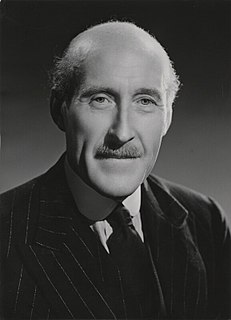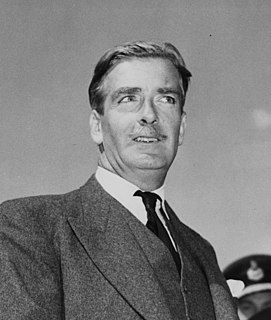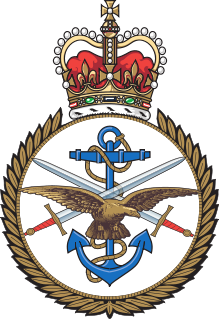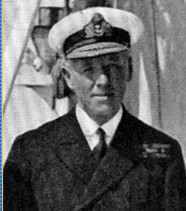
The position of Secretary of State for War, commonly called War Secretary, was a British cabinet-level position which existed from 1794 to 1801 and from 1854 to 1964. The Secretary of State for War headed the War Office and was assisted by a Parliamentary Under-Secretary of State for War, a Parliamentary Private Secretary who was also a Member of Parliament, and a Military Secretary, who was a general.

The Secretary of State for Air was a cabinet-level British position. The person holding this position was in charge of the Air Ministry. It was created on 10 January 1919 to manage the Royal Air Force. In 1946, the three posts of Secretary of State for War, First Lord of the Admiralty, and Secretary of State for Air became formally subordinated to that of Minister of Defence, which had itself been created in 1940 for the co-ordination of defence and security issues. On 1 April 1964, the Air Ministry was incorporated into the newly-created united Ministry of Defence, and the position of Secretary of State for Air was abolished.

Her Majesty's Principal Secretary of State for Defence is an official within Her Majesty's Government and head of the Ministry of Defence. The office is a British Cabinet–level position.

General Hastings Lionel Ismay, 1st Baron Ismay, nicknamed Pug, was a British Indian Army officer and diplomat, remembered primarily for his role as Winston Churchill's chief military assistant during the Second World War and his service as the first Secretary General of NATO from 1952 to 1957.
A war cabinet is a committee formed by a government in a time of war. It is usually a subset of the full executive cabinet of ministers. It is also quite common for a war cabinet to have senior military officers and opposition politicians as members.

Albert Victor Alexander, 1st Earl Alexander of Hillsborough, was a British Labour Co-operative politician. He was three times First Lord of the Admiralty, including during the Second World War, and then Minister of Defence under Clement Attlee.

Neville Chamberlain formed the Chamberlain war ministry in 1939 after declaring war on Germany. Chamberlain led the country for the first eight months of the Second World War, until the Norway Debate in Parliament led Chamberlain to resign and Winston Churchill to form a new ministry.

Harry Frederick Comfort Crookshank, 1st Viscount Crookshank, was a British Conservative politician. He was Minister of Health between 1951 and 1952 and Leader of the House of Commons between 1951 and 1955.

Liberal David Lloyd George formed a coalition government in the United Kingdom in December 1916, and was appointed Prime Minister of the United Kingdom by King George V. It replaced the earlier wartime coalition under H. H. Asquith, which had been held responsible for losses during the Great War. Those Liberals who continued to support Asquith served as the Official Opposition. The government continued in power after the end of the war in 1918, though Lloyd George was increasingly reliant on the Conservatives for support. After several scandals including allegations of the sale of honours, the Conservatives withdrew their support after a meeting at the Carlton Club in 1922, and Bonar Law formed a government.

The Conservative government of the United Kingdom that began in 1922 and ended in 1924 consisted of two ministries: the Law ministry and then the first Baldwin ministry.

Stanley Baldwin of the Conservative Party formed the second Baldwin ministry upon his reappointment as Prime Minister of the United Kingdom by King George V after the 1924 general election. His second ministry ended following the so-called "Flapper Election" of May 1929.

Winston Churchill formed the third Churchill ministry in the United Kingdom after the 1951 general election. He was reappointed as Prime Minister of the United Kingdom by King George VI and oversaw the accession of Queen Elizabeth II in 1952 and her coronation.

The Conservative government of the United Kingdom that began in 1957 and ended in 1964 consisted of three ministries: the first Macmillan ministry, second Macmillan ministry, and then the Douglas-Home ministry. They were led by Harold Macmillan and Sir Alec Douglas-Home, who were appointed respectively by Queen Elizabeth II.

The Churchill war ministry was the United Kingdom's coalition government for most of the Second World War from 10 May 1940 to 23 May 1945. It was led by Winston Churchill, who was appointed Prime Minister by King George VI following the resignation of Neville Chamberlain in the aftermath of the Norway Debate.

The 1945 Prime Minister's Resignation Honours were announced on 14 August 1945 to mark the resignation of the Prime Minister, Winston Churchill, following the success of the Labour Party in the 1945 General Election.
The Anglo-French Supreme War Council (SWC) was established to oversee joint military strategy at the start of the Second World War. Most of its deliberations took place during the period of the Phoney War, with its first meeting at Abbeville on 12 September 1939. The final three sessions were held in France during the German Blitzkrieg of May and June 1940.

Following the resignation of Winston Churchill in April 1955, Anthony Eden, then-Foreign Secretary, took over as Leader of the Conservative Party, and thus became Prime Minister of the United Kingdom. Upon assuming office, Eden asked Queen Elizabeth II to dissolve parliament and called a general election for May 1955. After winning the general election with a majority of 60 seats in the House of Commons, Eden governed until his resignation on 10 January 1957.



















